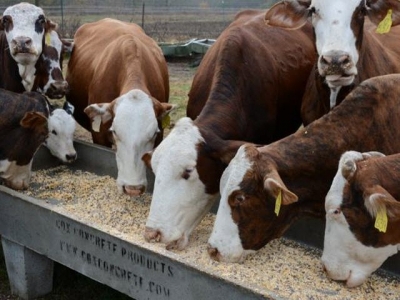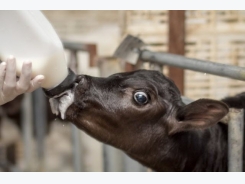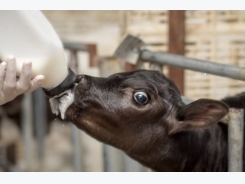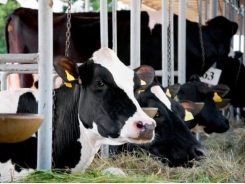Lice in cattle herds can bite producer profits

(Texas A&M AgriLife Extension Service photo by Adam Russell)
Cattle producers should be mindful of a common pest lice in their herd. Longer winter coats on cattle provide ideal conditions for populations to grow and become a problem that can hurt herd health and producers’ profitability.
Two types of lice affect cattle herds: biting lice and sucking lice.
A common wintertime pest in cattle herds lice can suck money from producers’ pockets, said Dr. Jason Banta, Texas A&M AgriLife Extension Service beef cattle specialist in Overton, Texas.
Banta said lice can infest cattle throughout the year, but more problems are seen from December to March. “As the weather gets colder, cows grow longer, thicker hair and that produces better cover and protection for lice, which means the lice have better reproductive rates,” he said.
Banta said there are two types of lice that affect cattle herds: biting lice and sucking lice.
“Lice will cause reduced appetite in a herd, which means reduced performance,” he said. “It’s important to be aware of the pest this time of year.”
Lice can also reduce red blood cell counts by 75%, and animals with heavy infestations can become anemic, Banta said.
The pests are transmitted through physical contact between cows, he said. Breaking their life cycle is the key to lice control.
“It’s important to know that available treatment products don’t kill the eggs,” he said. “So, many control methods will take two treatments before the life cycle is broken. Always treat every animal in the herd, because that one you don’t treat will be the one that causes another infestation for you to deal with.”
Banta said if using traditional insecticides like Cylence or most permethrin-based products, then an initial insecticide application should be made to knock down lice populations, followed by another application two to three weeks later.
There are products available like Standguard and Clean-up II that require only one treatment. Additionally, certain pour-on dewormers including Eprinex, Cydectin and Dectomax only need to be applied once for season-long control, Banta said.
“If you go with an injectable dewormer for internal parasites, it’s important to know they only get the sucking lice and won’t control biting lice,” he said, adding that with injectable dewormers, "make sure (to) use a pour on insecticide to take care of the biting lice.”
Always read and follow label directions when using dewormers and insecticides for control, Banta said.
Any new cows or bulls should be treated prior to introduction to the herd, he added.
“After the treatment regimen, your cattle will typically be in good shape until the next fall or winter,” he said. “Treat them, control them and you’re done.”
Related news
Tools

Phối trộn thức ăn chăn nuôi

Pha dung dịch thủy canh

Định mức cho tôm ăn

Phối trộn phân bón NPK

Xác định tỷ lệ tôm sống

Chuyển đổi đơn vị phân bón

Xác định công suất sục khí

Chuyển đổi đơn vị tôm

Tính diện tích nhà kính

Tính thể tích ao




 More understanding needed on feed ingredient, rumen interaction
More understanding needed on feed ingredient, rumen interaction  Feed additive may cut cow methane emissions, boosts…
Feed additive may cut cow methane emissions, boosts…